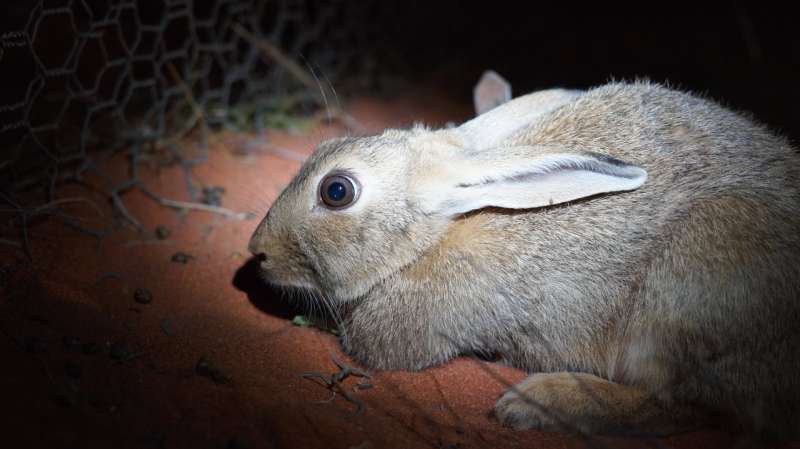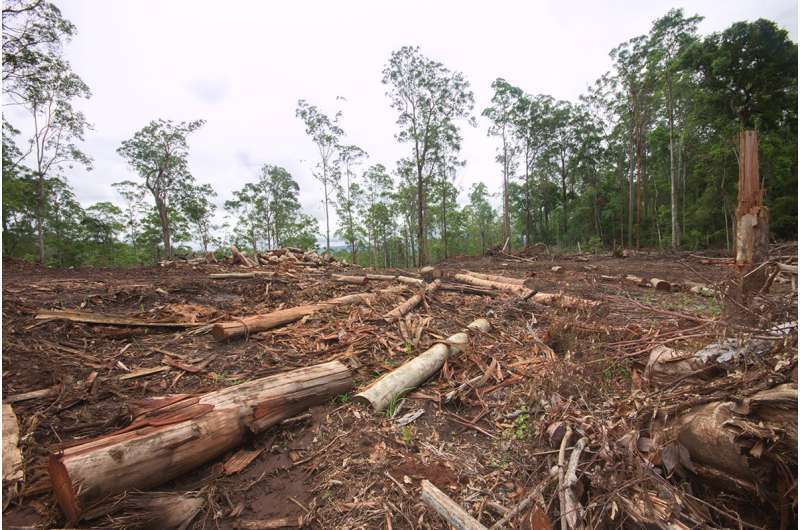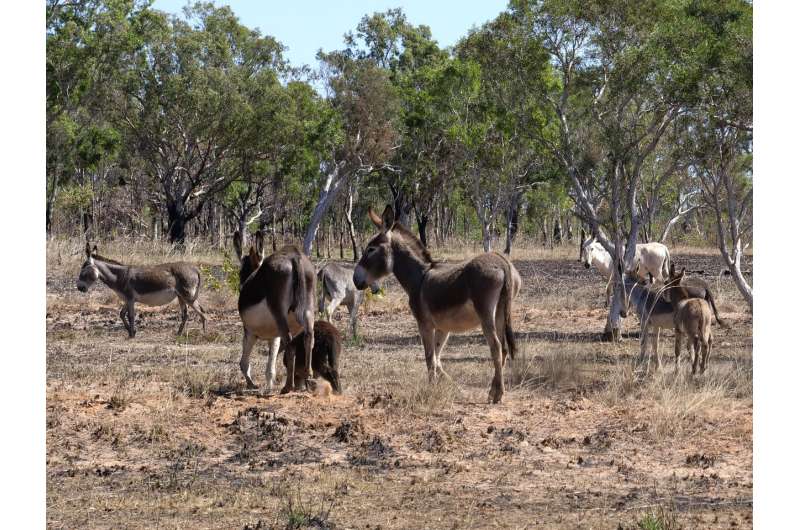Invasive species and habitat loss our biggest biodiversity threats

Invasive species and habitat loss are the biggest threats to Australian biodiversity, according to new research by the Threatened Species Recovery Hub in partnership with The University of Queensland.
Lead researcher Stephen Kearney from UQ's School of Earth and Environmental Sciences said Australia was rich in unique biodiversity, but has had a poor track record since European settlement.
"Australia is one of only 17 'megadiverse' countries globally, with more than 12 per cent of the world's vertebrate species—more than four out of five of our species are found nowhere else on Earth," Mr Kearney said.
"The country has recorded 90 extinctions since European settlement—36 plants, 27 mammals, 22 birds, four frogs and an earthworm, and extinction rates per decade are not improving.
"One of the major causes of Australia's ongoing extinction crisis is our insufficient response to threats to our biodiversity.
"To support improvements in this area we have reviewed the major threats facing over 1500 species listed as Critically Endangered, Endangered or Vulnerable under Australian environmental law.
The top factors impacting Australia's threatened species are invasive species, which affect 82 per cent of our threatened species, and changes in habitat, which affect 74 per cent of species.

"Invasive species include pest animals, plants and diseases, while changes to habitat include things like altered fire patterns and degradation from human activities," Mr Kearney said.
"Around the world the top two impacts on threatened species are habitat loss and change due to agriculture, closely followed by overexploitation activities, such as hunting or timber harvesting.
"Overexploitation threatens around three quarters of imperilled species globally, but only about one quarter of Australian species.
"The large impact of invasive species sets Australia apart from the global trend.
"Globally, invasive species only impact around a third of threatened species, but in Australia they are a threat to 100 per cent of threatened frogs, over 95 per cent of threatened mammals, fish and birds, and to about 80 per cent of threatened plants, insects and reptiles."

Chief Executive of the Centre for Invasive Species Solutions, Andreas Glanznig, said invasive species had pushed native species to a crisis point and without innovation and new management options we would see an ongoing-downward spiral.
"Australia is in the midst of an extinction crisis and invasive species don't stop at state borders, so we need to continue to take landscape-scale and coordinated action against invasive species," Mr Glanznig said.
"It's now an arms race and we need new and innovative ideas, such as biocontrol agents and genetic technologies, so we see invasive species decline and threatened species rise."
More information: Stephen G. Kearney et al, The threats to Australia's imperilled species and implications for a national conservation response, Pacific Conservation Biology (2018). DOI: 10.1071/PC18024
Provided by University of Queensland



















